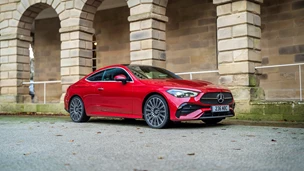When the first front-engined diesel X-Type was brought to the world a couple of years ago - to the accompaniment of flatline alarm calls on the life support systems of old-school Jaguar enthusiasts - the engine in question was Ford's two-litre TDCi unit, which produces a modest 128bhp. It gave the X-Type unusually good mid-range performance, but more generally it didn't feel as quick as a Jaguar ought to.That's been attended to by the addition of the 2.2-litre diesel to the range. Used in the same specification as found under the bonnet of the Mondeo ST TDCi, it gives an extra 24bhp over the smaller engine, and you can feel every last one of those 24 horses pulling at the reins. In my opinion (though not that of some colleagues), the 2.2 seems appreciably quicker in all conditions, most especially when an overtaking opportunity presents itself and you don't have much time to make use of it.The extra power has also allowed Jaguar to fit a six-speed gearbox. The two-litre can't pull a sufficiently high top ratio to make any more than five worthwhile, but the 2.2 has no problem at all dealing with a sixth gear which gives not far short of 40mph for every 1000rpm. The smaller-engined car isn't suitable for an automatic transmission, but I reckon that this one is, and it seems odd that manual remains the only option.One X-Type issue has not been fully resolved with the introduction of the 2.2 diesel. Jaguar can do a fantastic job of providing heavy, powerful cars with a superb ride/handling balance, but paradoxically it struggles to do anything of the kind with lighter, less powerful ones. I've said before that I believe this is because the X-Type is not a car Jaguar people really want to build (it was introduced to shove up volume after Ford took over), and in particular I can't be persuaded that they are at all comfortable with front-wheel drive.The effect is that the X-Type wobbles over crests and often builds up a rocking motion which clearly doesn't help its cornering ability and is none too impressive for the occupants either. One passenger, experiencing this behaviour for the first time, commented later: "It made me sick. I'd expected something better from Jaguar."The Sport specification of the test car, which includes handsome 18" alloy wheels and commensurately low-profile tyres, must be partly to blame, but there's nothing you can do about it at the price. Although it's the third of six trim levels in the X-Type range as a whole, it represents the entry level for the 2.2 diesel. Standard specification is generous and includes a heated windscreen, washable headlamps, dynamic stability control, cruise control and sport seats.There's more to come after that, of course. The test car's options included ten-way electric adjustment for both front seats, parking sensors at either end, a 70/30 split rear seat, Bluetooth functionality and Xenon headlamps with automatic levelling. This last item can't be manually over-ridden, to the immense irritation of fellow road users in my part of the world.Either the levelling system was wrongly set on the test car or it just isn't very good - even on their dipped setting the lights shone all too easily into other drivers' eyes or rear-view mirrors, and at night I was constantly getting flashes from headlights or rear foglights. It was difficult to convey the message that it was all Jaguar's fault, and that I'd have avoided dazzling people if I'd had any choice in the matter.Certain Jaguar standards remain. For a slight premium over the Mondeo ST TDCi you get a much more elegant-looking car with an interior whose style is unmatched by anything else in the class, plus of course the further appeal of a high-class badge. These are the saving graces of the X-Type, which even in this form is neither as good as it pretends to be nor as it ought to be.

Our Rating



